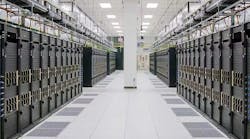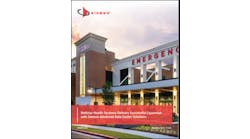PHOENIX, Ariz. – The data center is very much alive, and cloud computing is not going to kill it. But cloud technologies are changing the way enterprises are deploying IT capacity across on-premise data centers, colocation facilities and cloud platforms.
That was the message from Bill Kleyman, Executive Vice President of Digital Solutions at Switch, in the keynote of Data Center World conference Wednesday at the Phoenix Convention Center. Kleyman summarized the results of the latest annual State of the Data Center survey from AFCOM.
“The cloud is not a replacement for the data center,” said Kleyman. “It’s a complement to the data center.”
The role of cloud computing is top-of-mind for the membership of AFCOM, which includes many corporate data center managers seeking to help their companies navigate a changing IT landscape. When research firms like Gartner proclaim that “the data center is dead” and predict that 80 percent of corporate data centers will be shuttered by 2025, it leaves many on-premise data center professionals pondering what lies ahead.
The State of the Data Center report presents a different assessment: Enterprise IT is becoming more cloud-like, with growing adoption of Linux containers and orchestration (35 percent of respondents), and the OpenStack platform (33 percent).
“In the next 12 months, cloud will be the dominant model,” said Kleyman. “There’s now a better level of maturity and understanding what cloud really is about.”
That doesn’t mean enterprise workloads will all shift to the cloud. Instead, cloud technologies are extending into the enterprise in the form of private clouds and hybrid clouds that span a public cloud platform and a private cloud. When it comes to the flavors of cloud computing, State of the Data Center participants say they are most likely to implement private cloud (57 percent) versus public cloud (46 percent) or a hybrid models (35 percent).
These changes come against the backdrop of rapid growth for all forms of data centers, amid rising adoption of machine learning/AI and BigData strategies.
“We are creating the foundation for the digital future,” said Kleyman. “Across the nation, we are seeing the data center market continue to boom. All of this data we’re creating is influencing the need for all this data center space.”
“We are creating the foundation for the digital future. Across the nation, we are seeing the data center market continue to boom.”
Bill Kleyman, Switch
Survey respondents, almost across the board, expect to expand their data center networks over the next three years, both in the number of facilities (from an average of 12 to 17 over the next three years), as well as square footage.
Edge Computing
That includes deployments for forms of edge computing that move data and services closer to the end user, reducing the latency of applications. The trend driving the edge computing model is the increased use of consumer mobile devices, especially consumption of video and virtual reality content and the growth of sensors as part of the Internet of Things.
“Slow is the new down,” said Kleyman. “That’s a huge driver for edge computing.”
Just 23 percent of AFCOM respondents have currently adopted edge strategies, but an additional 34 percent expect to deploy edge over the next three years.
Redundancy
At DCF we’ve written about the growing trend to manage resiliency through the network, as well as the increased use of variable resiliency – housing some workloads with no generator or UPS support – as a means of reducing the need for redundant infrastructure (and the accompanying expense).
Some segments of the AFCOM membership appear to be trending in the opposite direction, and are contemplating additional redundancy, according to the State of the Data Center report.
The largest group of respondents (47 percent) are currently using an N+1 power configuration, as would be expected. But the AFCOM members using a more redundant N+2 configuration is expected to rise from the current 21 percent to 30 percent over the next three years.
A similar trend shows up in cooling, where N+1 (44 percent) is the predominant approach, but use of an N+2 design appears poised to rise from 24 percent today to 27 percent in three years. We’ll explore this topic more in additional coverage from Data Center World.
Data Center Management
Kleyman was intrigued by the survey results concerning data center management and DCIM (data center infrastructure management) tools. The DCIM market has evolved gradually as end users work through the best ways to use the technology, especially with assets spread across complex environments spanning cloud, colo and on-premises.
But Kleyman discerns the seeds of change in the State of the Data Center results on predictive analytics, which ranks at the bottom of the list of features in current use, but has the highest projected adoption rate (33 percent) over the next three years.
“I think the DCIM market is going to see a big shift in the next three to four years,” said Kleyman.






